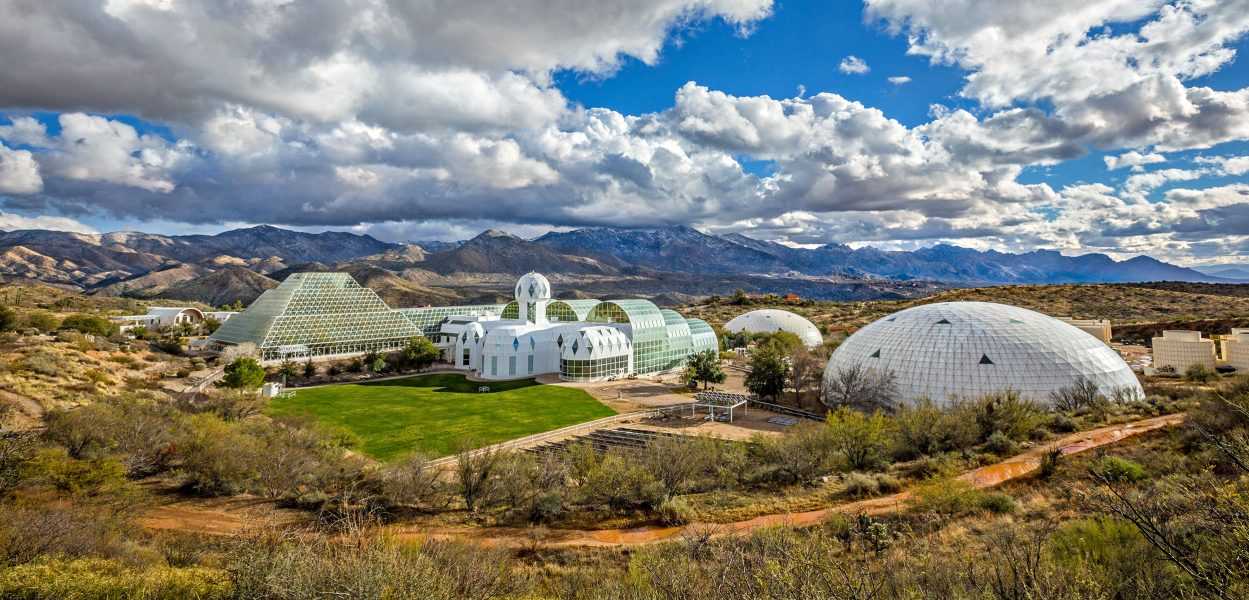“Those who are inspired by a model other than Nature, a mistress above all masters, are laboring in vain.” Leonardo Da Vinci
BIOSPHERE 1 has been flourishing for millions of years as a perfectly balanced, self-contained and beautifully functional habitat planet. BioDomes attempt to integrate the innate intelligence found in Nature’s self-sustained ecosystems. BioDomes & Bio Sphere Dome Villages are rising to meet the challenge of creating viable environmental solutions to some of the complexities of living and growing food in the modern world.
Inspired by Buckminster Fuller, who first coined the word Earthships, Pacific Domes has been pioneering sustainable habitats by sharing the vision of BioSphere Domes with individuals and communities throughout the planet. One such project can be found on Navajo land in northern Arizona. A Pacific Domes family member monitored the system for 10 years. This self-contained Bio Sphere Geodesic Dome ecosystem generates emissions-free electricity, producing food and even recycling grey water – wastewater from household sources (toilets accepted).
BIOSPHERE 2 rises up from the southwest desert landscape just outside Tucson, Arizona. Aptly named Biosphere 2, the gigantic BioDome greenhouse structures are the largest closed self-sustaining eco system ever created. The PACIFIC DOMES family worked closely with Biosphere 2 during the early days of attempting to recreate the Earth’s ecosystems. Biosphere 2 is now owned and operated by the University of Arizona, as part of an ongoing science research laboratory mimicking Earth’s ecosystems.
BIOS 3 is another closed ecosystem at the Institute of Biophysics in Krasnoyarsk, Siberia, formerly of the Soviet Union. Attempts to purify air and grow food for space exploration in a sealed environment began in 1972 with the BIOS 3 Siberian Experiments in Bio-regenerative Life Support. Before we can colonize other potentially habitable planets, the first thing we need to do is develop a fully functional biosphere for long-term human occupation. We especially need to figure out ways to keep CO2 levels in check, maintain a steady internal temperature, avoid water acidification, and find a way to keep our sanity in check given the close confines.
The Space Exploration Analog and Simulation Mission MARS Hi-Seas Desert Research Station is a 36-foot-wide (11 meters) and 20-foot-high (6 m) solar-powered dome remotely located on the Mars-like slopes of Mauna Loa on the island of Hawaii. A team of six scientist astronauts live for an entire year in the PACIFIC DOMES habitat simulating life on Mars. The NASA-sponsored goal is to find out how people will respond to the isolation that might accompany a mission to Mars.
Living organisms have evolved well-adapted structures and materials over geological time through natural selection. The complexity of biological systems that might be imitated is enormous. BioDome earth based science finds answers in the bio-mimicry of Nature’s ecosystems.
About the Author: The author is a serious blogger who writes on variety of end user informative topics such as bio sphere domes.
